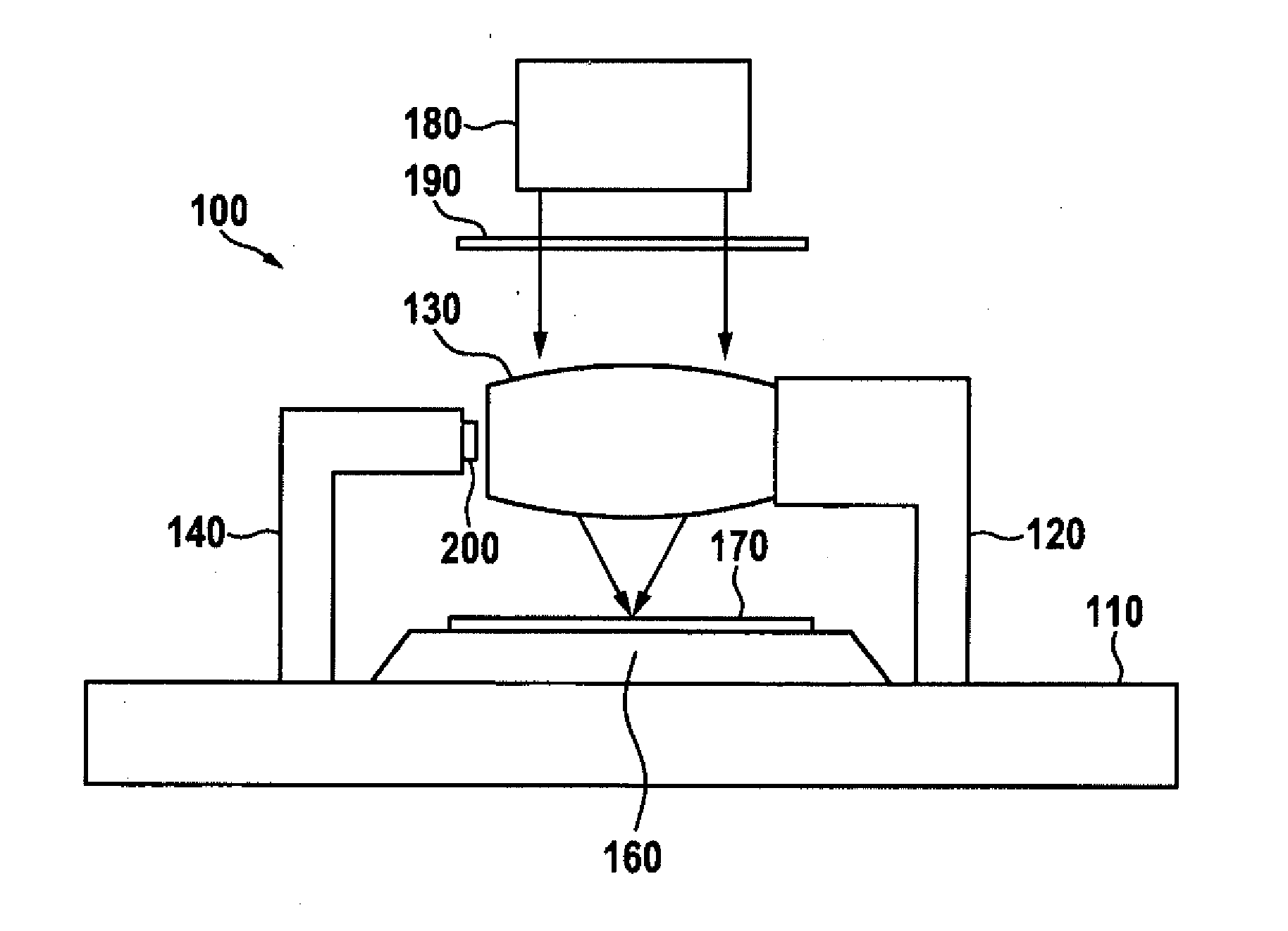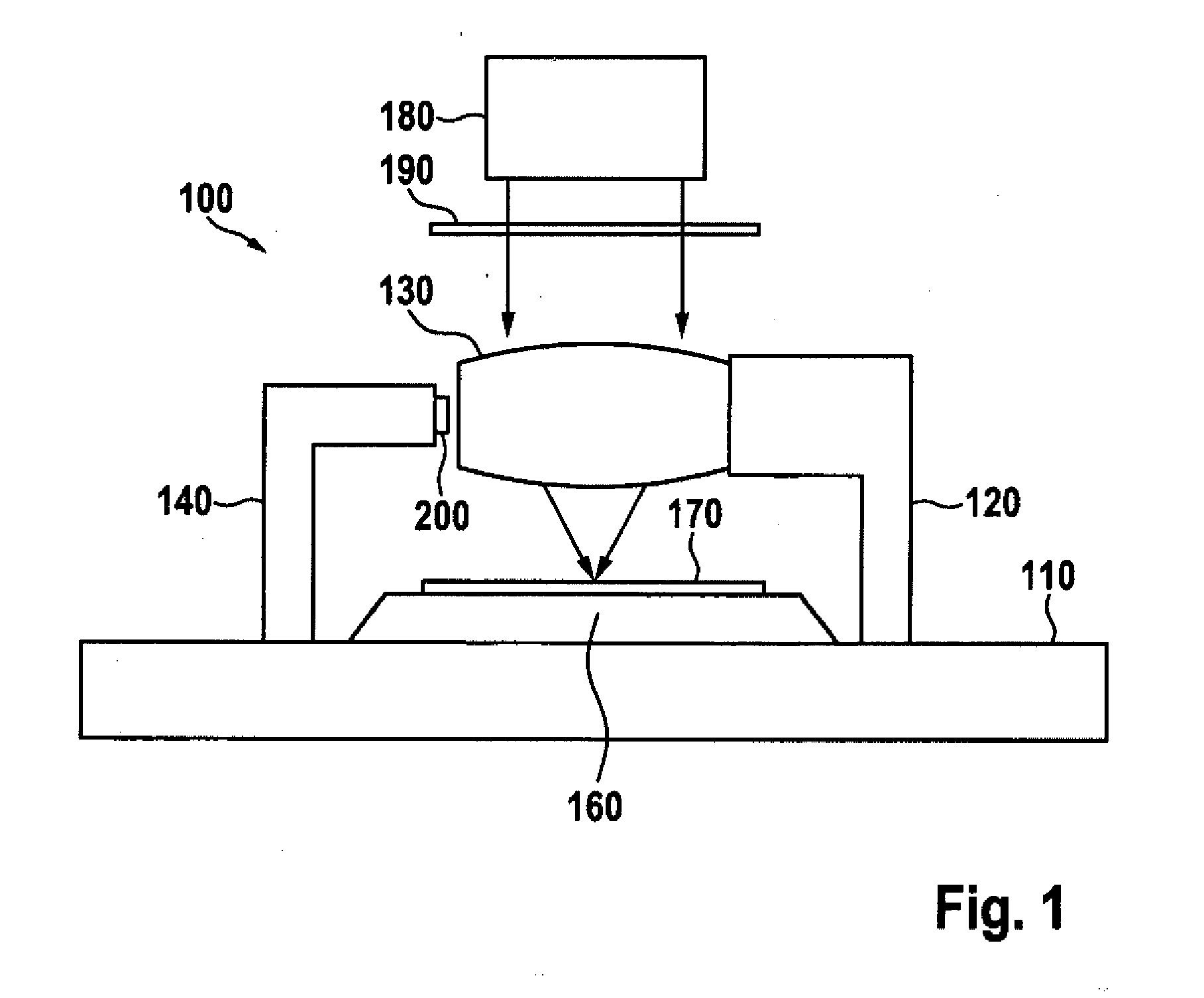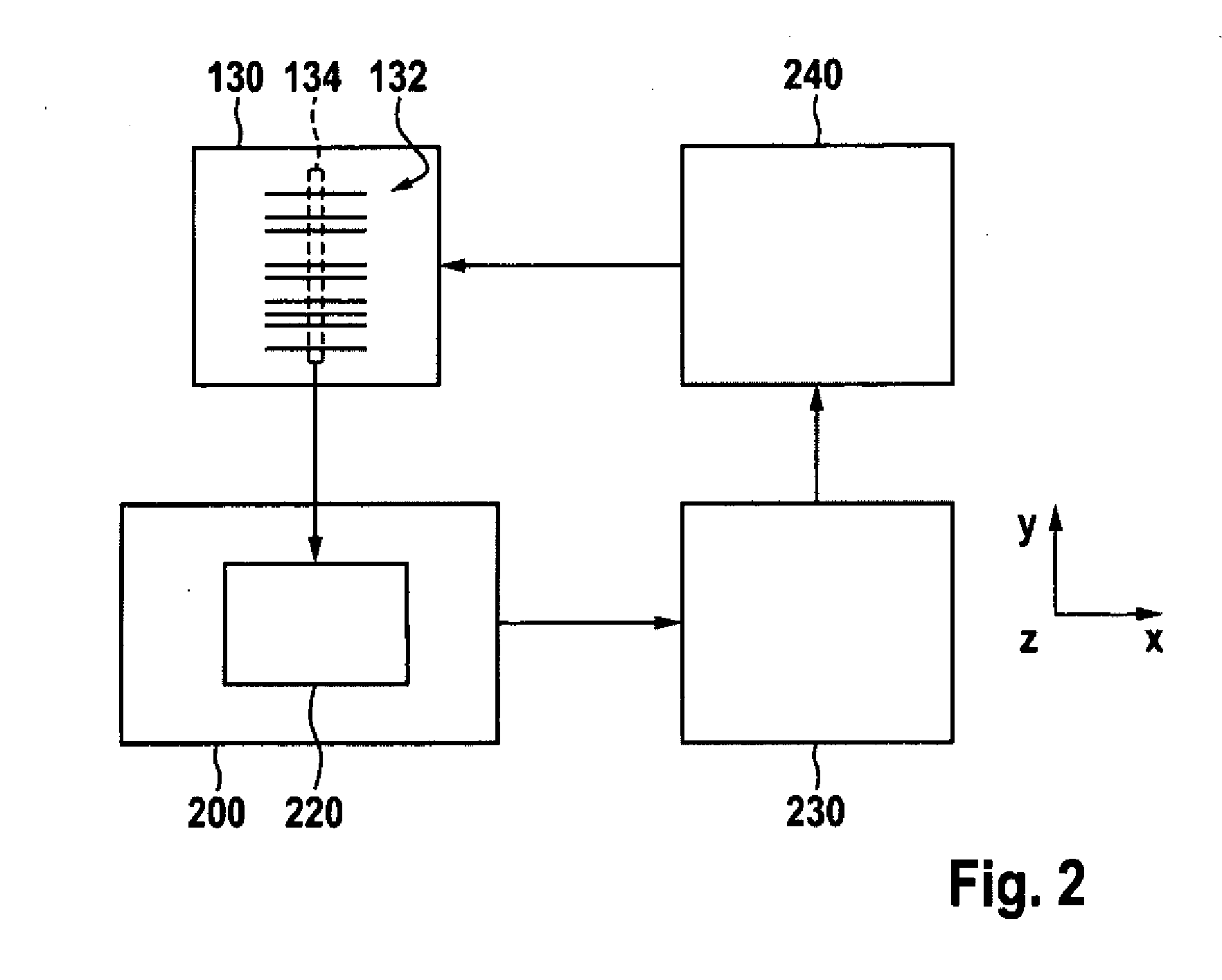Lithography apparatus
a technology of lithography and apparatus, applied in the field of lithography apparatus, can solve the problems of temperature-dictated expansion (i.e., the expansion caused by temperature changes) of structural and optical elements, and affect the measurement results, so as to reduce the number of sensor receptacles, the effect of space saving arrangement and minimizing the influence of temperature changes
- Summary
- Abstract
- Description
- Claims
- Application Information
AI Technical Summary
Benefits of technology
Problems solved by technology
Method used
Image
Examples
first exemplary embodiment
[0030]FIG. 1 shows a schematic view of a lithography apparatus 100 in accordance with a first exemplary embodiment. This lithography apparatus 100 comprises a baseplate 110, on which a holding frame 120 for mounting at least one optical element 130 and a measuring frame 140 for mounting a sensor arrangement 200 are provided. The lithography apparatus 100 typically comprises a plurality of optical elements. In FIG. 1, however, only one optical element 130 is illustrated by way of example, in order to schematically elucidate the functioning of the lithography apparatus 100.
[0031]In the example illustrated, a wafer receptacle (wafer holder) 160 is provided below the optical element 130, in which wafer receptacle a wafer 170, e.g. a silicon wafer, can be received. The wafer receptacle 160 can be embodied as a step-and-scan system, for example, which moves the wafer 170 during the exposure and also in the exposure pauses step-by-step relative to the baseplate 110.
[0032]The optical elemen...
second exemplary embodiment
[0058]FIG. 6 shows a plan view of a sensor arrangement 200 of a lithography apparatus in accordance with a second exemplary embodiment. Elements which are structurally or functionally identical to elements of the first exemplary embodiment are identified by the same reference signs and are not explained in greater detail below. In particular, the sensor arrangement 200 shown in FIG. 6 can be used as a position sensor in the lithography apparatus 100 in FIG. 1.
[0059]In this exemplary embodiment, a sensor 250 is arranged in the sensor receptacle 210, which sensor determines the position of the optical element 130 with respect to two degrees of freedom. The sensor 250 determines the position of the optical element 130 with respect to the x-direction and the y-direction relative to the measuring frame 140. The sensor 250 therefore has two detection directions in which the sensor detects a change in the position of the optical element 130. In this exemplary embodiment, too, the sensor 25...
third exemplary embodiment
[0063]FIG. 7 shows a plan view of a sensor arrangement 200 of a lithography apparatus in accordance with a third exemplary embodiment. Elements which are structurally or functionally identical to elements of the first exemplary embodiment are identified by the same reference signs and are not explained in greater detail below. In particular, the sensor arrangement 200 shown in FIG. 7 can be used as a position sensor for detecting the position of the optical element 130 in the lithography apparatus 100 in FIG. 1.
[0064]In this exemplary embodiment, two sensors 220a and 220b are arranged on the sensor receptacle 210. The sensors 220a and 220b respectively have a detection region 225a and 225b for detecting a physical quantity. In this exemplary embodiment, the sensors 220a and 220b can respectively be structurally identical to the sensor 220 from the first exemplary embodiment, and can consequently likewise in each case have an array of photodiodes arranged along a detection direction ...
PUM
| Property | Measurement | Unit |
|---|---|---|
| angle | aaaaa | aaaaa |
| angle | aaaaa | aaaaa |
| angle | aaaaa | aaaaa |
Abstract
Description
Claims
Application Information
 Login to View More
Login to View More - R&D
- Intellectual Property
- Life Sciences
- Materials
- Tech Scout
- Unparalleled Data Quality
- Higher Quality Content
- 60% Fewer Hallucinations
Browse by: Latest US Patents, China's latest patents, Technical Efficacy Thesaurus, Application Domain, Technology Topic, Popular Technical Reports.
© 2025 PatSnap. All rights reserved.Legal|Privacy policy|Modern Slavery Act Transparency Statement|Sitemap|About US| Contact US: help@patsnap.com



